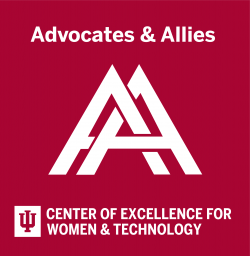This week, we’re returning to our conversation about LGBTQ+ experiences in higher education and academia. We talk about how cisheteropatriarchy pervades many aspects of our lives, the experiences of LGBTQ+ women in higher education, and ways we can better support the LGBTQ+ community.

Reflect: What does cisheteropatriarchy look like?
Cisheteropatriarchy is a system of power and control that centers cisgender, heterosexual men/masculinity at the top of a gender/sexual hierarchy (Smith, 2006), using tools like gender roles to reinforce binary notions of gender and sexuality. This system creates a way of being in the world that accepts only certain kinds of behavior and relationships, punishing women and LGBTQ+ people who do not follow these expected roles/norms (Schilt & Westbrook, 2009; Woodson & Pabon, 2016). Toxic Masculinity is a mechanism through which this system continues, as it punishes men who do not adhere to acceptable behavior and beliefs of “real” men (Buenavista et al., 2021; Marshall et al., 2016). How does this system effect our conversation patterns in the office, the classroom, and beyond? How does it affect our expectations of professionalism and academic success (and our rewards for conforming to these expectations)? How does it bias our sense of credibility or authority toward “masculine” behavior?
Learn: What do LGBTQ+ women go through in higher education?
Campus climate issues and structural inequality based in cisheteropatriarchy persist in higher education – including microaggressions directed at one’s identity (Fisher et al., 2018) especially for LGBTQ+ women who experience more microaggressions (AWM, 2018; Brown, 2021), disruptions to critical professional opportunities (Czech & Waidzunas, 2021; Griffith et al., 2022), tokenization of their identities (Pitcher, 2017; Speciale et al., 2015), and poor access to affirmative healthcare and/or facilities (McKenzie, 2020). In environments where inclusion and safety of the LGBTQ+ community is not emphasized, students, staff, and faculty are less likely to report incidents of bias (Weise et al., 2021), instead suffering in silence to avoid being punished. STEM fields have a deep history of repeating rigid, binary expectations of “normal” for current/would-be scientists and researchers (Quichocho et al., 2020). These expectations create a “dude bro” climate for students/faculty who are LGBTQ+ and/or women (Miller et al., 2021), that leads to isolation, attempts to cover one’s identity, and attrition from the field (Bilimoria & Stewart, 2009; Forbes, 2020; Hughes, 2018). Cisheteropatriarchy in higher education limits how LGBTQ+ people, especially LGBTQ+ women (Brown, 2021; Czech & Waidzunas, 2021; Speciale et al., 2015), are allowed to live and express themselves, instead providing “success” only to those who follow limited roles.
Change:
- Developing Meaningful Mentorship: Research has frequently pointed to the importance of relationships in the long-term trajectory of LGBTQ+ people in higher education (Linley et al., 2016; Wright-Mair & Marine, 2021). Despite mentorship being critical for promoting sense of belonging (Garvey & Kurotsuchi Inkelas, 2012) and resilience (Graham, 2019) for LGBTQ+ students to persist into further education, these students frequently lack access to affirming mentorship (Graham, 2019). The AQSESS program at IUPUI is a great example of a program that addresses this need by encouraging success and persistence of queer students in the academy. From the perspective of faculty/staff, in addition to harassment that disrupts their work (Czech & Waidzunas, 2021), LGBTQ+ women also experience hostile climates that often prevent them from seeking opportunities that would propel their careers (Griffith et al., 2022). Establish connections with LGTBQ+ women faculty that holistically emphasizes their work and their personal experiences.
- Address Knowledge Gaps: Not everyone in your office, classroom, or department will have the same level of knowledge around the language and experience of LGBTQ+ people, so providing resources and opportunities to learn about these identities is crucial. Consider collaborating with the LGBTQ+ Center on integrating this information into the content shared within your communities, such as curriculum. When you hear someone misgender or use the wrong pronouns of another person, make sure to address this mistake by role modeling (e.g., “I am sure they weren’t excited by the new assignment”). Call out when others attempt to reinforce gender roles/expectations around the lives of LGBTQ+ people, especially LGBTQ+ women (e.g., “well now you’ll never be able to have a real family” or “you’re not a real woman”).
- Shifting the Climate: Consider how your environment promotes norms that underline “toxic masculinity” and cisheteropatriarchy, such as dominating a space or avoiding the encouragement of others’ success. Encourage practices where people pause and make space for everyone to be included in sharing ideas or stories. When empathetic collaboration and teamwork are emphasized, LGBTQ+ students, faculty, and staff are able to integrate their identities into their work/interactions without fear of being punished (Field & Rajewski, 2021; Griffith et al., 2022; Schipull et al., 2019). Consider how your policies may also reflect cisheteropatriarchy, such as dress codes that reinforce gender binaries (Reddy-Best, 2018).
Weekly Resource Recommendations
- Book: Queering STEM Culture in US Higher Education – This edited volume features stories of students, faculty, and administration that speak to the experiences of LGBTQ+ people in STEM..
- Video: ‘Ask Me’: What LGBTQ Students Want Their Professor to Know – This video details daily experiences of LGBTQ college students, many of which translate to LGBTQ faculty and staff.
- Article: LGBTQ+ STEM Interviews – LGBTQ+ STEM centers the voices of LGBTQ+ scientists around the world, sharing about their experiences in higher education and in the field.
- Podcast:Nancy – Hosts Kathy Tu and Tobin Low share the emotional, personal stories of queer people and allies who don’t always get heard.
Get these tips delivered to your mailbox!
We send these tips every Tuesday during the fall & spring semesters to our mailing list. If you are not already on our mailing list you can request to be added by completing the form below.

